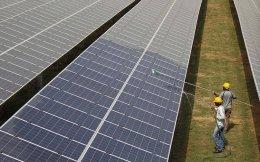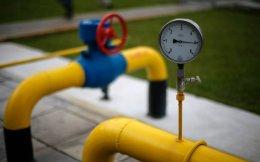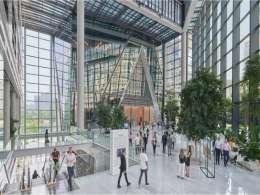IDFC Project Equity—IDFC’s subsidiary managing the $930-million India Infrastructure fund--which invests only in infrastructure assets was busy adding to its portfolio in 2009 when most private equity investors were deeply engaged in solving the problems of portfolio companies. In an interview with VCCircle, M K Sinha, President & CEO, IDFC Project Equity, believes that infrastructure assets generate consistent returns irrespective of a boom or recession. Excerpts:-
You were the most prolific private institutional investor in 2009 with five deals totaling an investment of $230 million, according to VCCEdge (VCCircle’s financial research platform). How do you see deal-making going forward?
We just converted the deals that were in pipeline from 2008 onwards. So, before public markets took off, we ended up closing a lot of deals. After the boom in public markets, we have done only one deal. We are very concerned about valuations. We do not pay more than what we should.
We are two different asset classes. We are an annuity investor, they are a growth investor. They invest in businesses, we invest in assets. We invest in core infrastructure, they have a theme which is infrastructure but that is widely defined. In growth equity, the dividends are reinvested into the business, whereas we like to collect our dividends. We will invest in ports and not shipping; airports and not airlines; roads and not an automotive or an EPC company.
These are assets that will only grow with increasing GDP and growing population. Where we are similar is that the management fee and compensation structure is the same as the PE arm.
Within infrastructure, which sub-sectors look more attractive?
Infrastructure constantly generates returns in high teens across sectors. Opportunities are high in the power and the road sector. As over 70% (by way of traffic) of Indian airports is already privatised, there is not much opportunity left here.
How do you deal with the longer gestation period in these projects?
We come in at financial close or when projects are under construction. The technology involved in infrastructure projects is fairly standard. We are happy to take on construction risk. There is visibility of usage and cash flow as soon as you construct. We don’t care about the gestation period as long as the first dividend cheque comes in three years.
What is your exit strategy?
We may never exit our investments. It’s an annuity stream once the first dividend cheque comes in. We could package it and sell our fund as a listed fund. Our investment horizon is typically much longer (7-8 years) unlike private equity (3-5 years). If we get our fund listed, we don’t need to exit investments as long as we get annuity income out of it. It’s like buying a house, renting it and living off it. Like REITs in the real estate sector, we are doing the same thing for our infrastructure assets.
What are the upsides to investing at an SPV level?
It provides an easy mechanism for liquidity. There are exit options like flipping the SPV back to the parent company, staying put in it or listing the SPV itself.
When do you plan to list the fund?
The best time would be when we have fully invested the fund with most of our assets generating annuities. I don’t know how soon that will be. We will invest the fund in two years and probably, two-three years later, our fund will start generating annuities. That is the kind of time frame we will look at.
In terms of returns, how are you positioned against the private equity arm?
Returns in private equity are higher than project equity. They make 23-25% while we make 18-20% over 10 years which we think is better than making 25% over three years because what matters is income. IRRs don’t really matter as our horizon of investment is longer and steady.
How are you different from long-term debt?
Debt generates 12% returns while we generate 18%.
Why is this model attractive?
Pension funds and insurance companies are looking for these kinds of assets. LPs have allocations for infrastructure, private equity, hedge funds, real estate and so on. Ours is a different asset class and we are benefiting out of that. It does not conflict with private equity which can get allocation from the same set of LPs. We went out and raised funds in the same period in 2008 and IDFC Private Equity raised $700 million while we raised $930 million. LPs who have an allocation to infrastructure in India would like to have a piece of this in their portfolio.
Is infrastructure an easy sell?
The Indian infrastructure story is known to everyone so it’s an easy pitch. The challenging thing is to prove your credentials. We were the only Indian entity successful to raise money in 2008. IDFC has a dominant prominence in project finance, investment banking, mutual fund and private equity and has huge credentials in Indian infrastructure. We cumulatively raised $1.6 billion when no one else was able to raise money. In fact, we initially planned to raise a bigger fund of about $2 billion but our investors asked us to first invest $1 billion and then go back to them. About one-third of the fund is invested till now. When we have invested our fund I, we will raise fund II, and hopefully have higher assets under management.






